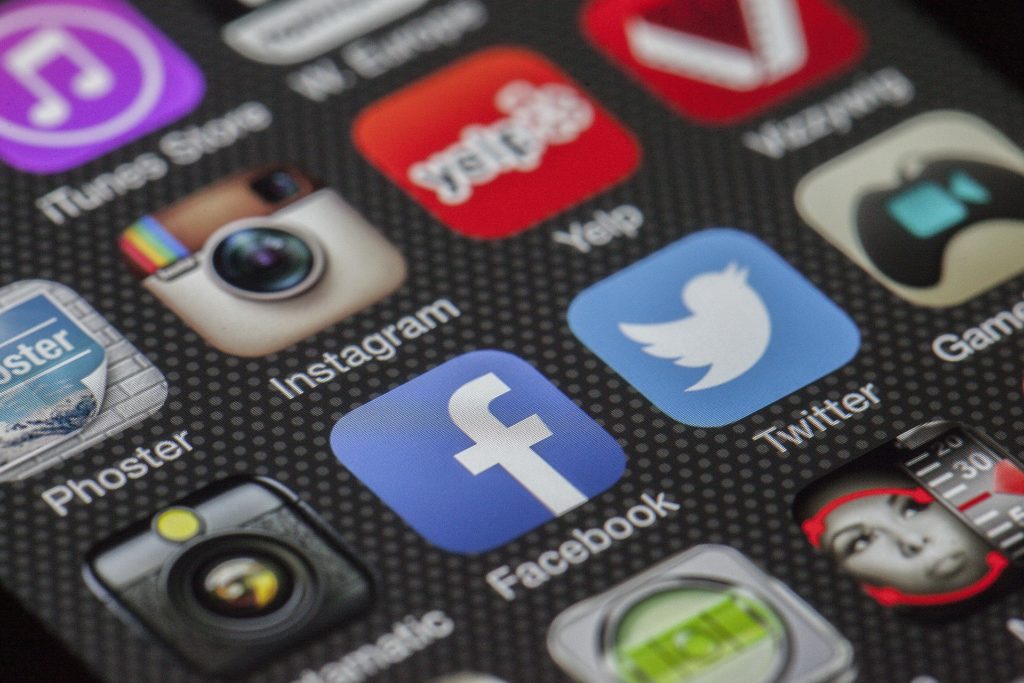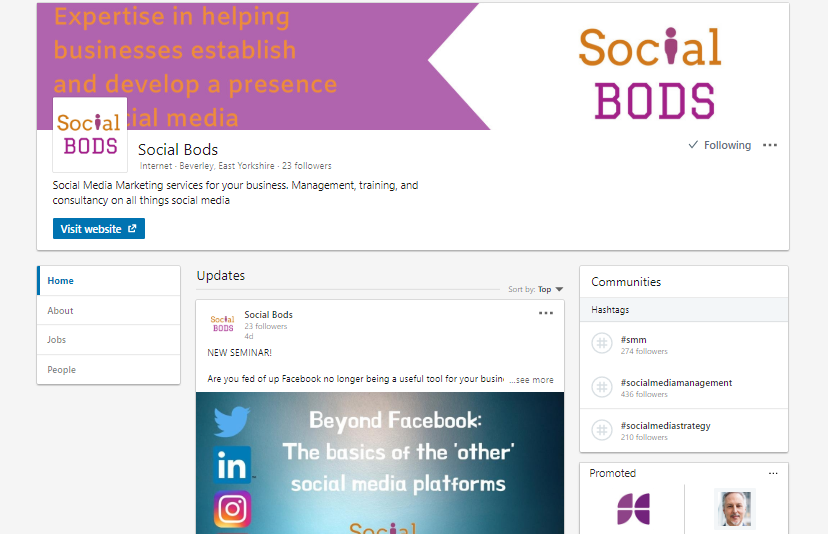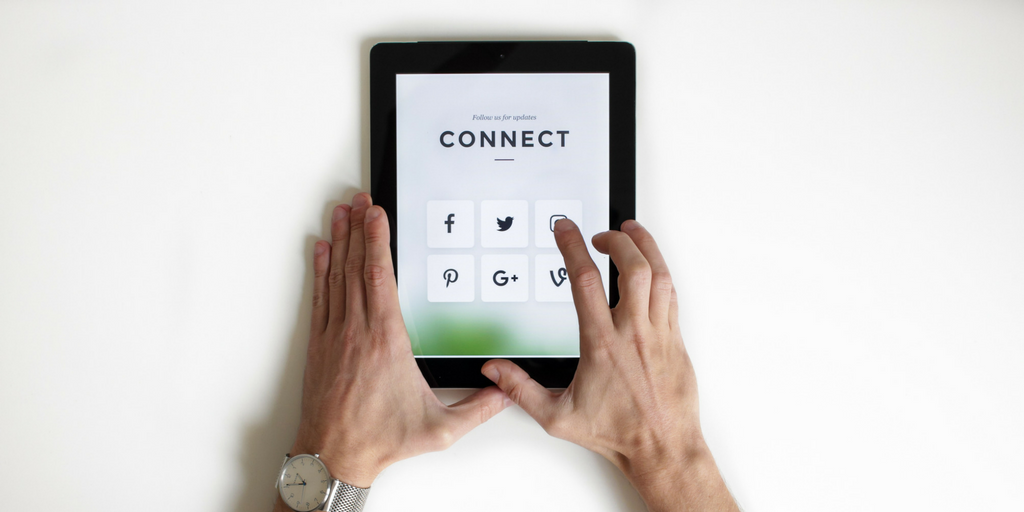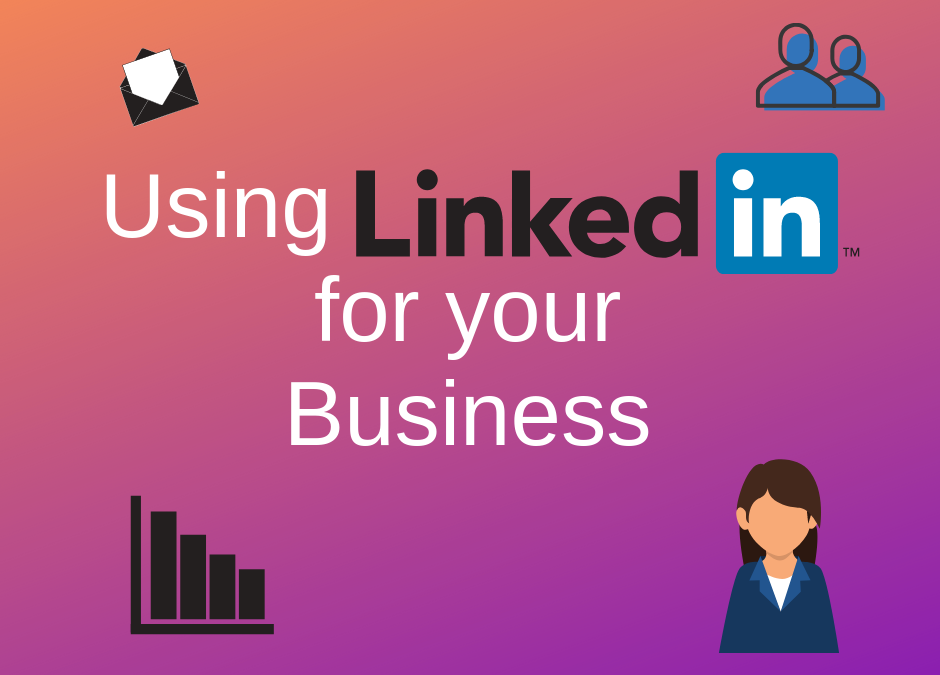At our recent social media for business clinic, a lot of the talk concerned LinkedIn. It’s not surprising that business people are interested in LinkedIn – it’s a great platform for business people and for the businesses themselves. Do you use LinkedIn for business?

This post is part of a series –
How to do Social Media for Business
Why is LinkedIn good for business?
Too many businesses tend to focus on Facebook and Twitter and pass off LinkedIn as good for professional development and networking. But LinkedIn is great for the business itself and if you want to share news with professional people (and if you’re in business of any sort then who wouldn’t?) then it’s worth having a business page.
As a B2B business for example, Social Bods would not dare dream of limiting ourselves to using certain platforms when there is LinkedIn as well. Afterall, we are a social media agency!

4 reasons why LinkedIn is good for business:
- Increase awareness of your brand
Having a LinkedIn page for your business is a good way to increase exposure of your brand, and a profile for yourself is a good way of developing your own personal brand and that of your business. LinkedIn is highly searchable; use some good keywords and it will help you get found. Anyone looking to do business with you, or your company, or thinking of working for you may well look you up on LinkedIn. If you do nothing else, at least establish a presence and optimise your profile.
Anyone looking to do #business with you, or your company, or thinking of working for you may well look you up on #LinkedIn. If you do nothing else, at least establish a presence and optimise your profile. #SMM #MarketingTips Click To Tweet- It can generate leads and referrals
LinkedIn is known for the many leads and referrals that it brings to businesses, especially for B2B businesses. It’s a good idea to expand your network by connecting with other users. While some don’t like connection to people they have never met in real life, we think that it’s worth doing; what’s the point in being on a virtual network if you’re not going to virtual network? You can always disconnect from them if they turn out to be a complete weirdo.
LinkedIn is very good when people need recommendations for work they have going on, and if you’re known in your field for what you do, LinkedIn users could recommend you. But they can’t if you’re not on LinkedIn.
- Drives website traffic
It’s simple to post links to your website content on to your profile or onto your company page. This will drive traffic to your website and get people to see how brilliant and witty you really are. If you don’t have a site, there is an option to write long-form articles on your profile and share your expertise.
- Build relationships
We’ve had some good relationships built up using only LinkedIn. We’ve found people to work with us, and work for us. We’ve been able to help people with advice and they’ve turned into clients or recommended us to someone who has. Social media is meant to be social and actually LinkedIn is pretty good in this respect.
Which industries can use LinkedIn?
This question appears to be asked quite frequently. LinkedIn has taken down their limited list of industries that’s allowed to be present, which now means that the platform is open to all businesses within any industry. Industries which do particularly well are recruitment and HR – LinkedIn is a great place to find a new job and is filled with those hungry to further their career – and business consultancy – people do like free advice. But any business can establish a presence on LinkedIn, whether B2B or B2C.
Any #business can establish a presence on #LinkedIn, whether B2B or B2C. Click To TweetWho uses LinkedIn?
Generally, the audience on LinkedIn tends to be older, more male, better educated, better qualified and with a higher income than the average social media user. It’s the only social media network where men outnumber women to a significant degree. If you’re looking to sell a Porsche, LinkedIn is where it’s at. If you have a high value product, then it’s worth looking at LinkedIn, even if you feel your product is too consumerist; they have the money to spend here.
Is it worth having a business page on LinkedIn?
Yes! It’s always worth having a well set-up business page. Whether you post to it regularly or not is up to you, but make sure you claim your company page (LinkedIn might have set one up already for you from your job title) so no-one else can, and be sure to add some information about your company and update the logo and the cover image. This will allow others to tag you in posts as appropriate, which is useful and for people to follow your company.
However, you could just build up your personal page and promote your business using that method. LinkedIn is a professional network so it’s almost expected (unlike Facebook) that you will exclusively talk about your business and what you’re up to on a professional level. This has the added bonus of you being able to find people and connect with them allowing you to grow quickly – you can’t do this on a page.
The benefits of a company page are that people can follow the page without having to be connected to you personally and you can use the insight and analytics to find out what your audience is engaging with.
The benefits of a #LinkedIn company page are that people can follow the page without having to be connected to you personally and you can use the insight and analytics to find out what your audience is engaging with. #SMM #SocialMedia… Click To TweetThere are also pages called Showcase Pages which can be created as a child page to a company page. These are designed to showcase a particular aspect of your brand. For example you might want a company page for your organisation, but a separate page for each of your divisions or specific products. These are useful where you have a large organisation but distinct services and products with different audiences.
How do you build a presence on LinkedIn?
It is not tricky to build a presence on LinkedIn, in fact it is very straight forward. Here is a step by step process you should follow:
Create a personal profile
As we all should know by now, the layout of a personal profile on LinkedIn is much like a CV. The only difference is that you are not limited 2 pages, therefore you can include as much or as little as you need.
Add your profile picture
Adding a profile picture is a must as it allows users to identify who you are. There is more than one person on this planet who shares the same name as you and will probably have a presence on LinkedIn. Besides that, none wants to connect with the wrong person and send a private message which could be confidential. Make the picture good; it needs to be clear and professional. It makes a HUGE difference.
Write a strong bio
A strong bio is essential. You need to tell people who you are, what you do, what you are good at, and what you can do for them. Don’t see it as a sales pitch but rather a rundown of your skills. Write it in the first person – third person bios scream arrogance – and try to put across your sparkling personality.
Anyone can look at anyone else’s profile (assuming you’ve set yours to default public, and why would you want to do otherwise?) and they do quickly make up their minds as to whether you’re worth connecting with or contacting. Don’t waste your opportunity.
You can upload examples into the projects section, and even add video. Have a play around and see what you can include that show you off to the max.
Fill in your employment and education history
On this section, most business owners write the bare minimum or not write anything at all. Don’t be so vague, instead talk about your role in depth. This will tell users who you are and whether you are the right person to connect with.
Review, review, review
Review your profile regularly – has anything changed? Is there something else you can add to it? Keep it as up to date as possible.
How to create a LinkedIn page
When you want to start a company page, check first to see that one doesn’t already exist. Often, LinkedIn will create one for you, especially where you’ve added a company name in your employment section. You can claim this page – just follow the process on-screen – and then add others as admins.
If you need to start a new one, then this is easy too, though you do need to have a reasonably well established profile yourself to do so.
But you should ALWAYS check one doesn’t exist already as it can cause confusion if there are multiple pages kicking around for the same company.
Add profile picture and a banner
As your personal profile, you can add your company logo as the profile picture so that your audience is able to identify who you are. Once you have done this, give your business page ‘a look’ by uploading a bold banner. Take into consideration the recommended dimensions. If the graphic details on your image are not within the dimension sizing, the whole of the image will not sit well.
Top tip: Social Bods recommend using Canva for creating banners for LinkedIn (or for any social media network). You can select a plain LinkedIn banner template which already has the set dimensions which makes life a whole lot easier!
Fill in the ‘About’ section
Here is where you write a full in-depth description about your business as a whole. Express the full nature of your company and nail its selling points in-depth. After you have written the greatest part, you then must add which industry your business is in, the website URL, the size of your company, location and its specialities. As for specialities, these are keywords to get your business found within a search. So, to get to the top of the search, treat it as an SEO strategy and you will not go wrong!
How to create content for LinkedIn
There are lots of different styles of content which you can create for both your personal profile and your company page.
Post images
Providing photographic content allows your audience to get to know your brand from a visual perspective. You can customise your own theme to match your brand’s identity so that your audience will instantly recognise your brand on every post. Here at Social Bods, we are big believers on having a theme. We love to be recognised by our audience and apply the same principles for clients. A picture can paint a thousand words, so don’t be shy in using images which show very quickly what you do and what you are good at. Even an innocuous photo of a coffee cup next to your company’s catalogue can work wonders.
Publish articles
Blogs are a great way to connect with your audience and establish your industry authority, but not everyone has one on their website. In this instance, you can use LinkedIn’s article feature to write long-form posts. You can include graphics and videos and links to wherever you want them to go.
If you do have a blog then posting the link to your profile or business page with some enticing text is a good idea.
OR you can write an abridged (not duplicate copy) article on LinkedIn AND then send people to your blog to read the full thing. This means you get extra digital juice.
If your aim to increase website traffic then you should publish them on your website first then post on LinkedIn, but if it’s kudos you want and the web stats are not important, then a simple LinkedIn article could be best.
Should I use hashtags on LinkedIn?
Yes! You can and should use hashtags on LinkedIn, but hold your horses, Clive. This isn’t Instagram. We recommend two to three very general hashtags to help your content get seen by a larger but broad audience. Very niche hashtags don’t have many followers and it’s about getting your content to those interested in the chat around your core topic.
Top tip – you can follow up to three specific hashtags as your page, and then find posts using those hashtags and engage with the poster as your page rather than your profile – not many people know that!

Photo by Elena Koycheva on Unsplash
Encourage your employees to become ambassadors
Include your employees within your marketing strategy and encourage them to become brand ambassadors by sharing the content from the business page to their personal profiles. To do this, all they need to do is follow the page themselves. Sharing the content will not only help build followers, but it will increase awareness of the brand and lead to conversations, and will also reinforce to their followers what they do. It’s a win/win for everyone.

Photo by Daniel Hjalmarsson on Unsplash
How to grow on LinkedIn
For a profile, growth is easy – go out and find people to connect with. Find people from your own company, current customers, suppliers, business people from your town, anyone in your industry, competitors even if you want. Send them a connection request with or without a special message (there’s little evidence to show these make any difference) and wait for them to connect back.
Don’t do too many connection requests at once or you will be chucked (albeit temporarily) into LinkedIn jail. Do a few every week and see how you get on. You can find people to connect to in your ‘My Network’ tab.
Some people swear by using the private message function to reach out to new connections. We wouldn’t recommend or not recommend this either way; you’re as likely to win new business as you are to annoy people, so treat it with caution. If you’re going to do this, then make it matter. Don’t automate and send the same blanket message to new followers the exact split-second they accept your connection request. But if you want to periodically rake through your new connections, and send the ones you like the look of a bespoke message that sounds more relevant to them, then do so – you might find you have a good success rate, but please do be prepared for the occasional backlash such as being ‘un-friended’ again, or getting a ‘sod off’ message back!
For a page, it’s harder to grow. Some pages just collect followers like following will be going out of fashion and it’s hard to know where they’ve come from. Others just get stuck on the same three followers for months. A lot depends on what you do and how active you are. Masses of followers isn’t a guarantee of success either way though so try not to sweat the small stuff and just keep being you.

Photo by Dylan Gillis on Unsplash
How do I use LinkedIn groups for business?
LinkedIn groups can be useful, but as you can’t join a group as your business page, groups are more about increasing your reach and reinforcing your authority on a personal level. Groups are good for discussion on a topic – you can have groups for business people in a specific area, or in a specific industry for example.
Unlike on Facebook, groups don’t show up in the main LinkedIn timeline, but this is rumoured to be changing very soon so it’s worth looking into groups. At the moment, you have to go in to the groups tab to find groups, join in discussions, and read what people are talking about. It’s not ideal and because of this, groups can be much harder to grow than in Facebook.
Is LinkedIn Premium worth paying for?
LinkedIn has a few paid options which you can take advantage of. The ones we are familiar with are LinkedIn Premium and Sales Navigator. These unlock premium features such as being able to search for and send messages to individuals which fit demographics of your choosing, or being able to look people up in private. Whether this can provide a good ROI for you and your business is a matter of trial and error. LinkedIn paid plans can be costly, which may be totally worth it if you’re pushing a high value product. The good thing about the LinkedIn paid plans is you usually get a month’s free trial to start you off, and you usually pay monthly, which means if you’re not finding it good value for you, you can cancel fairly swiftly.
What about LinkedIn advertising?
You can also pay for one-off advertising campaigns on LinkedIn, and if you’ve got something to push out to a professional, high net worth audience, then we highly recommend you consider LinkedIn advertising. It’s really easy to use and there are lots of options available to suit your campaign. You could pay to put your content into the timeline of an audience of your choosing, or maybe opt to use InMail, which sends your content as a private message. You tell LinkedIn the sort of people you want (job title, geographic location, seniority, industry etc) and LinkedIn does the work for you. Just be warned that the price per engagement/click is way higher than on Facebook; don’t be surprised if LinkedIn costs you £5 per lead instead of the 50p you’re used to over on the other channels. But if you’re selling a Porsche, spending £100 per lead on social media advertising seems like small change.

Photo by Dane Deaner on Unsplash
Using LinkedIn Jobs
LinkedIn Jobs is a great feature which allows users to find jobs in their industry and geographic area, however, contrary to popular belief, this is actually a paid feature. Businesses opt to use LinkedIn Jobs to list their vacancy and LinkedIn charges them whenever someone views the job. This can get very costly but if it helps you find the right candidate for your business, then it could be worth thinking about.
When listing a job, it shows the individual that listed the job and their details, so if you’re posting a job on behalf of your business, make sure the person who is the most appropriate to your potential candidates is the one tasked with doing the official posting. This always looks better than the job poster being a random recruitment consultant or even your social media manager!
In conclusion:-
LinkedIn is a great social media platform for business, and not just those who consider themselves B2B. There are multiple opportunities to develop your personal online profile as well as that of your brand. It’s a great way of reaching people who are in a position of influence in their business, who have better than average disposable income, and who are better educated. If this aligns with your brand, then it’s worth looking at LinkedIn, getting on there, and getting to know the ins and outs better.
Have you had success promoting your business on LinkedIn?

Want to get our newsletter and learn about new events and get free social media help and advice? Register here


